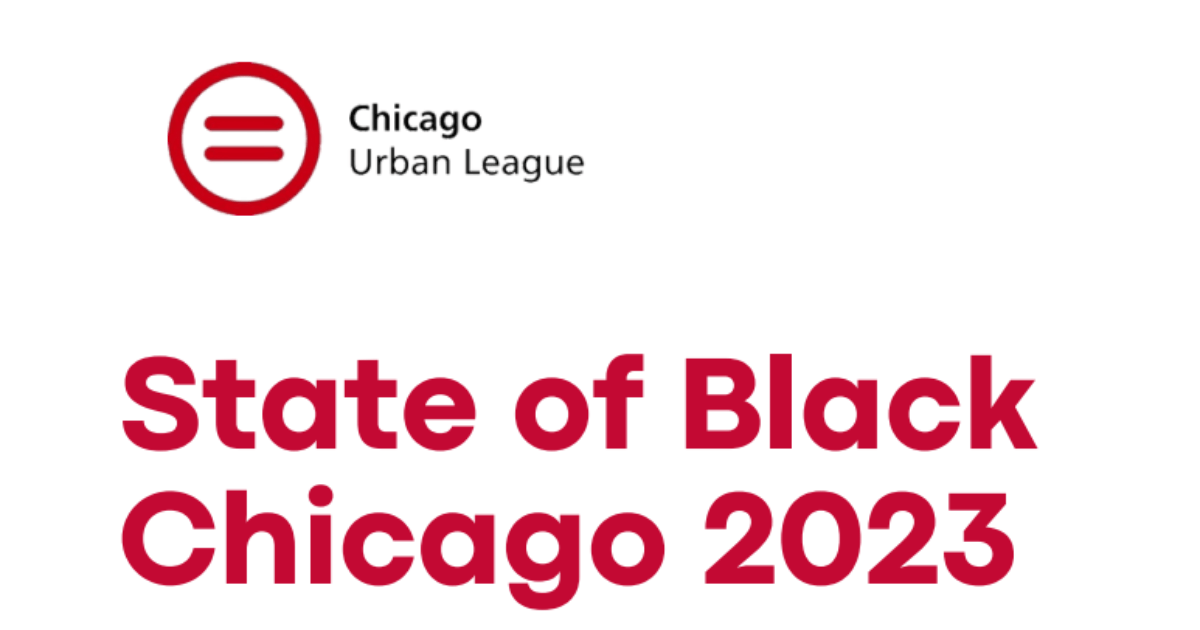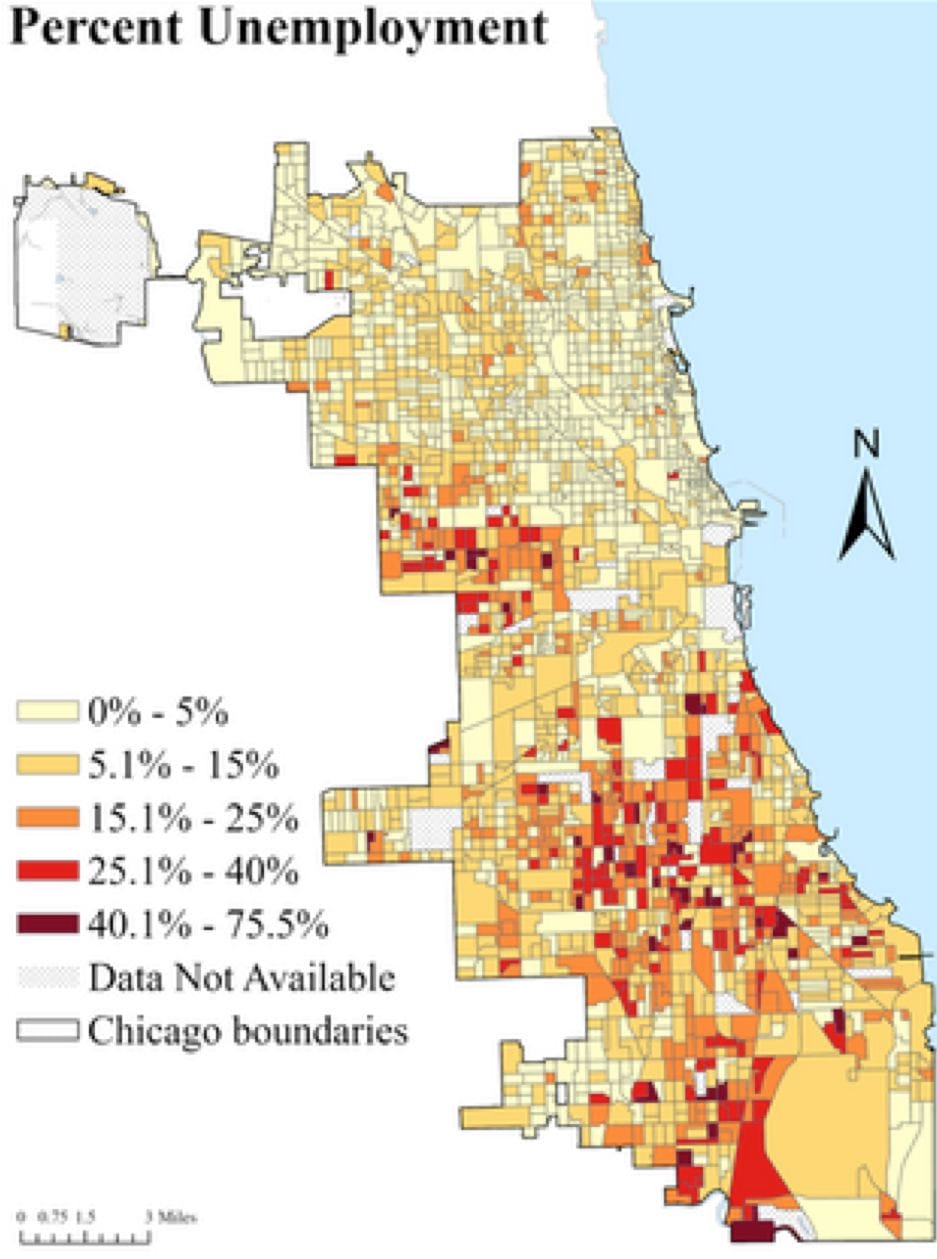While white residents recovered economically from COVID-19, Blacks in post- pandemic Chicago continue to fall behind in income, employment, housing, education and health, according to a recent Chicago Urban League report.
The 43-page report paints a grim future of predominately Black neighborhoods hit hard by COVID-19 deaths during the coronavirus pandemic that began in March 2020.
Titled “The State of Black Chicago 2023,” the report did not examine COVID-19’s effects on Black neighborhoods, but the Urban League presented data that show the social economic gap continues to widen among Chicago’s ethic groups.
The report said 27 of Chicago’s 77 neighborhoods are predominantly Black. In a city known historically for its segregated neighborhoods, the report describes the Black-white residential segregation as “staggering.”
According to the report, 80 percent of Black Chicagoans would need to be relocated to desegregate or evenly distribute the groups throughout the city. The report said Blacks account for more than 90 percent of the population in 21 percent of the city’s U.S. Census block groups.
In the income and employment category, the report said among Black residents:
- The median household income ranged from $3,225 to $79,460. Only 4.8 percent of these block groups presented median household incomes above $40,000.
- Up to 78 percent of the residents live below the poverty level. The poverty rate is higher than 30 percent in approximately 40 percent of these predominantly Black communities.
- The unemployment rate was as high as 72 percent. Only 31 percent of these specific neighborhoods displayed unemployment rates below 10 percent.
In Chicago’s housing market, the report said the cost of housing (median gross rent and median housing value) is substantially lower in predominantly Black areas (90 percent or more) in comparison to those neighborhoods where 10 percent or less of the residents are Black.
However, the Urban League said residents of Black communities suffer tremendously from severe rent burden (paying more than half of their income to rental costs). About 58 percent of severely rent-burdened block groups had populations that were at least 75 percent Black or more. The median percent of income spent in these communities equaled 37 percent.
The Urban League report sheds light on Chicago’s homeless problems. A recent report by the Chicago Coalition for the Homeless counted 65,611 homeless, including people who are temporarily staying with others or couch surfing, a method that advocates say more accurately accounts for housing insecurity.
According to the Urban League report, this count is a 12.6 percent increase from 2019. The coalition reports that 55.8 percent of those experiencing homelessness are Black, and 75.9 percent of those living in shelters or on the streets are Black.
The report said Blacks and investors of all racial backgrounds face barriers when investing in housing located in the Black communities on the West and South sides. Only 25 percent to 40 percent of mortgage loan applications are approved. Wealthier communities with higher proportions of white residents consistently display mortgage application approval rates that are higher than 60 percent.
The Urban League said that while homeownership is considered a tool for building wealth, Black homeowners still find their properties being undervalued in comparison to their white neighbors and similar properties owned by white people in the city. Black Chicagoans are more likely to own homes in predominantly Black neighborhoods, which exhibit higher rates of foreclosure and vacancy.
In the Chicago area, the racial gap in home values rose from $50,000 in 1980 to more than $324,000, suggesting a dramatic increase in neighborhood racial composition. According to the report, the median housing value for homes in communities with over 90 percent Black populations is $140,000 less than the same value for homes in communities where the resident population is at least 10 percent.
The Urban League said it analyzed the chances of mortgage application loan denial across racial groups for an owner-occupied, conventional mortgage of $255,000 for a loan term of 360 months, with the applicants having a debt-to-income ratio of 30 to 39 percent. When all other factors held the same, Black applicants still faced disproportionately high odds of getting denied (10 percent) compared to other groups, especially white Americans (2.8 percent).
The report also examined Black students in Chicago Public Schools. The report said there are 269 schools with predominantly Black student populations (75 percent or higher). About 93 percent of these schools have student populations in which more than 75 percent of the students were low income, according to the report.
In the report, the Urban League compared 57 schools where Black students were 90 percent or more of the student body to the 11 CPS schools with the highest percentages of white students (20 to 44 percent). According to the report, in the predominantly Black schools:
The percentage of freshmen on track to graduate is 24 percent lower.
The dropout rate is 7 percent higher, and the graduation rate is approximately 20 percent less. The proportion of graduates enrolled in college and remaining in college after their first year is 30 percent lower.
Among health and environmental issues, the Urban League, citing data from the Chicago Department of Health, said Black Chicagoans are still behind the city and all other racial groups’ life expectancy rate. According to the report, the gap in life expectancy between white and Black Chicagoans increased from 8.8 to 10 years. But the report said the average life expectancy for Black Chicagoans is less than 70 years old. Health officials said COVID-19 played a considerable role, but chronic diseases within the Black community were the primary factors.
The report also said:
- 92 percent of Black residents possess some form of health insurance.
- Hypertension and obesity are twice as high in Black neighborhoods (45 percent).
- Lead poisoning in children under the age of five was highest in neighborhoods that were predominantly Black (2.58 percent) or a combination of Black and Latinx (2.27 percent).
- This rate was extremely low (0.38 percent) in white neighborhoods. On average, 45 percent of residents in the 27 Black Chicago neighborhoods (out of 77) have low food accessibility, compared to 27 percent of residents living in the 11 white Chicago neighborhoods.
The Urban League also included data on community policing by Chicago police officers. According to the report, between January 1, 2021, and June 30, 2022, CPD reported 106,950 investigatory stops.
Black men accounted for 61 percent of all investigatory stops and 70 percent of all men stopped. Approximately 8 percent of all stops involved Black women who comprised 65 percent of women experiencing an investigatory stop. Black men displayed the highest incidence, with Black women having the third highest rate behind Latino men (22 percent).
While investigatory stops appear to be spread out across the city, further examination shows that Black folks are stopped primarily in predominantly Black and lower-income communities.








